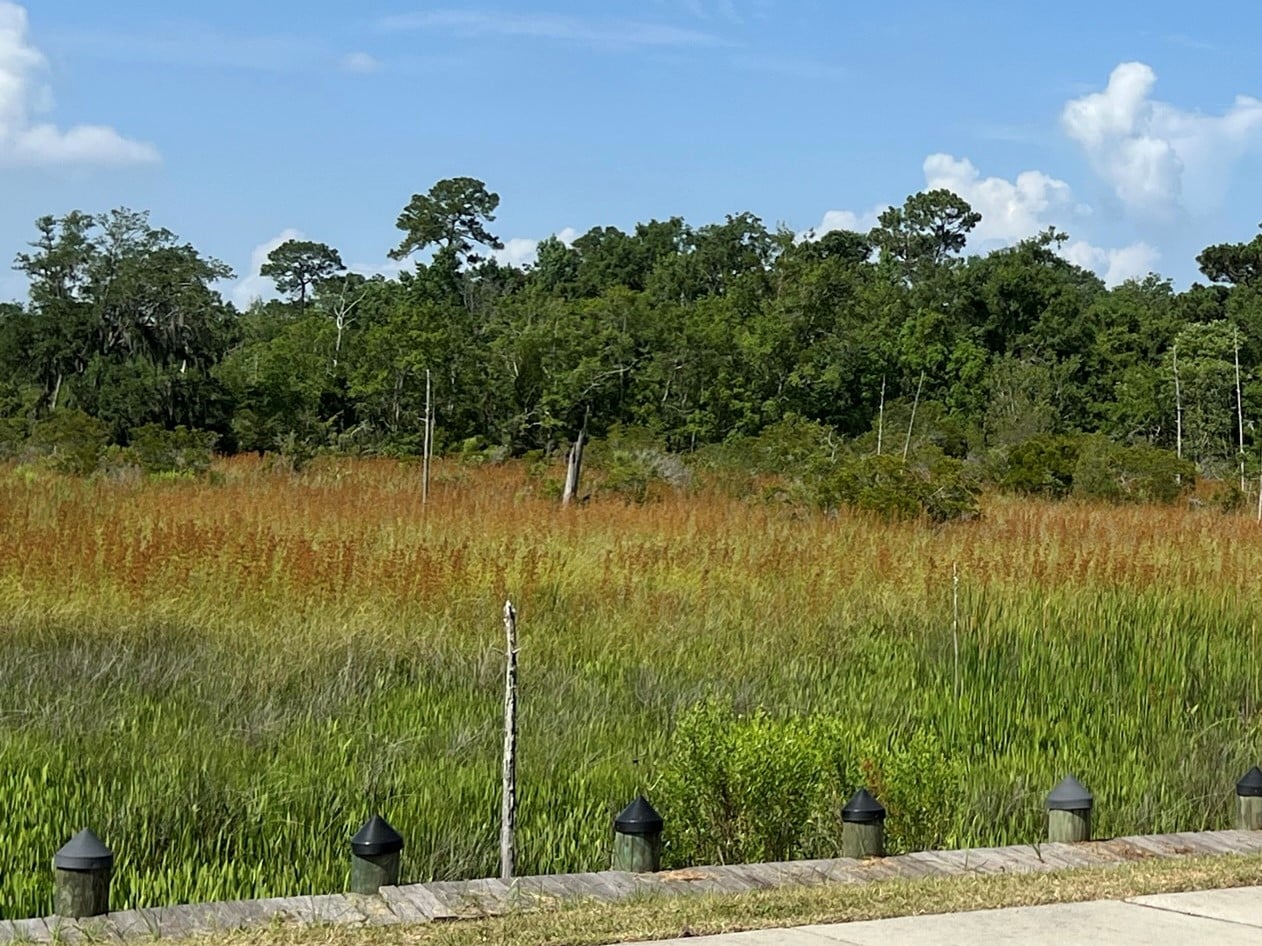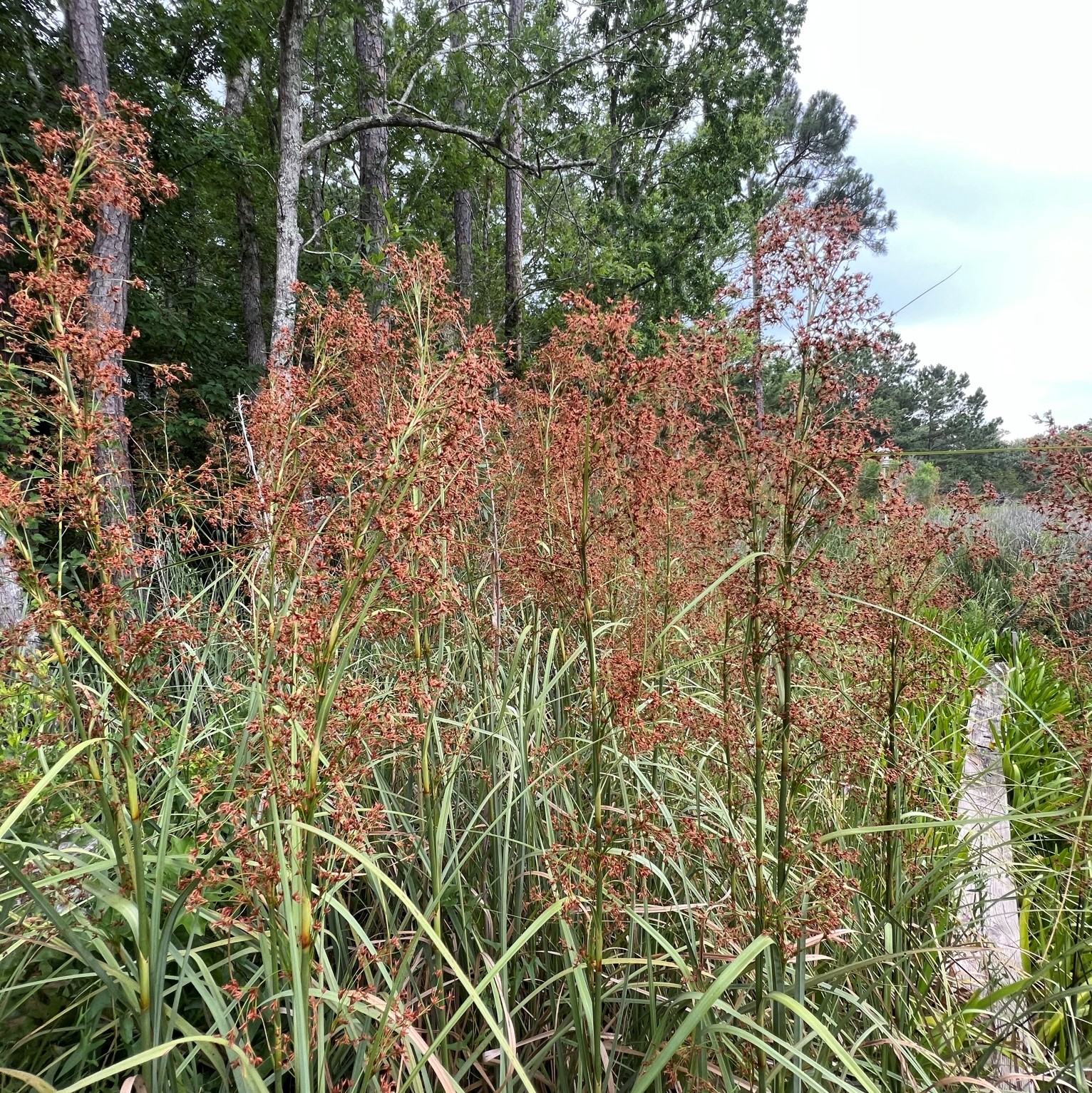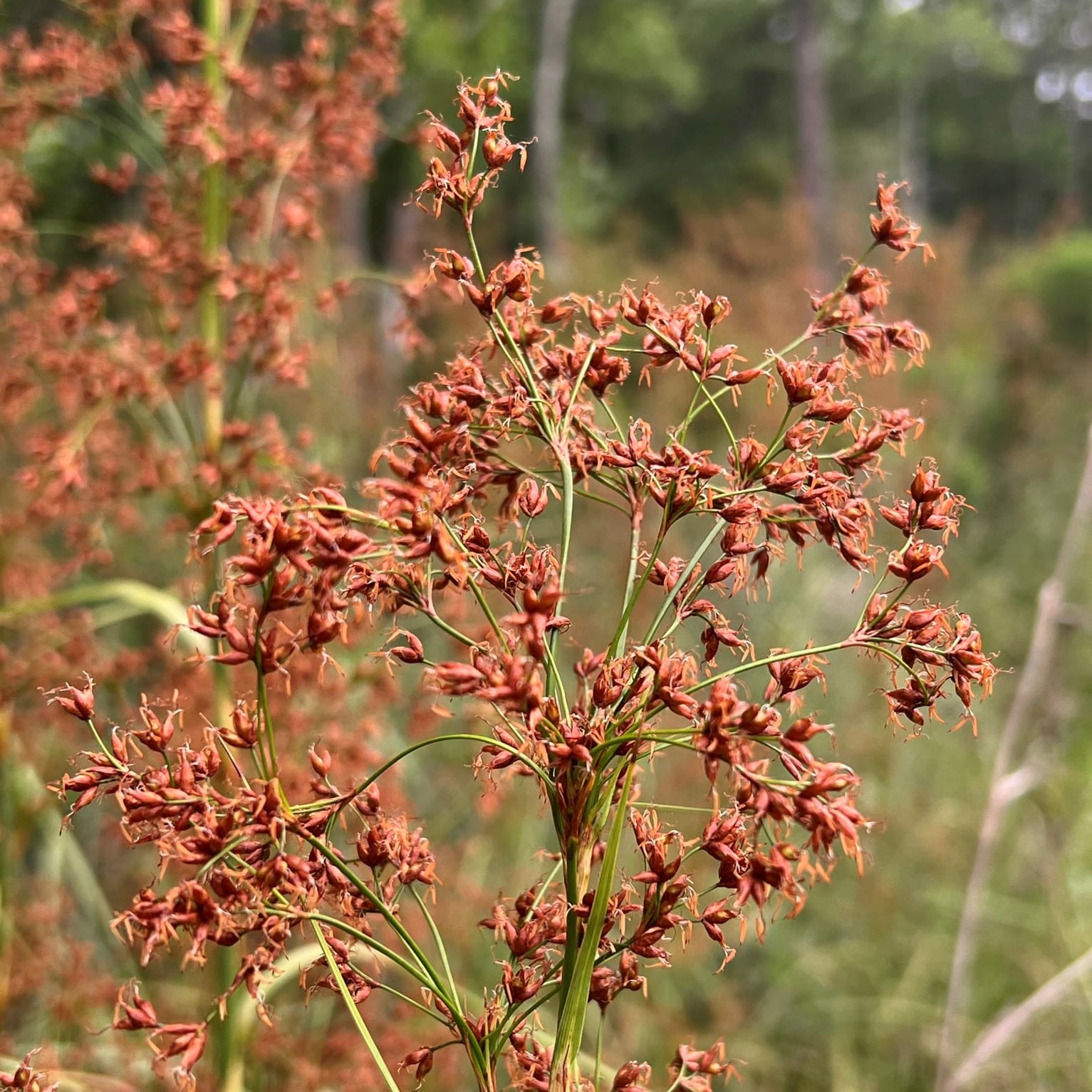Common names for many plants and animals reflect something about their physical appearances or key attributes. Sawgrass is certainly one of these, well-named given the fine, sharp, sawtooth edges to their leaves that will inflict paper cut lesions on anyone that handles them. Yet, the plant and its prominent flower and seed stalks form a dramatic contrast to the tidal freshwater regions of our estuaries.
Known scientifically as Cladium mariscus, this species can occur as near monotypic stands of tidal freshwater reaches of coastal rivers, like the Escatawpa and Pascagoula Rivers. It is also commonly found as narrow bands of plants along the wetland/upland boundaries of coastal marshes and bayhead swamps.
As a researcher of tidal marshes, I spent much of my time navigating the sharp points of Black Needlerush, which dominates the brackish regions of estuaries. As I shared in a story about that species, getting poked and prodded by that plant was interesting enough. Little holes in your skin are one thing, having multiple lacerations across exposed skin from Sawgrass is another level of discomfort – lasting much longer!
It is little wonder then that research about Sawgrass marshes lags behind that of other tidal marshes. And frankly, that is ashamed. I suspect that Sawgrass marshes are every bit as productive as any other and support a wealth of freshwater and saltwater species that depend on all types of tidal marshes of estuaries.
Besides the relative shortage of scientific knowledge about this species, the one thing about the plant that is readily apparent, without being cut to shreds, is the color and texture of its leaves and prominent flower/seed stalks. Viewed from a high-rise bridge, Sawgrass marshes present a yellow/orange palette of color that can be eye-catching. In early summer, the tall, copper-colored flower/seed stalks add dramatic contrast of color and texture.
The numerous, small, round seeds persist on the stalks throughout the summer and fall and feed numerous species of birds and other wildlife. Those stalks, with or without a few yellow leaves, can also make interesting dried elements to flower arrangements or on their own, lasting months, if not longer. Who needs to buy these types of flower arrangement elements when they are growing in our backyards and local waterways?
As with many of my stories about plants and animals, my purpose here is to highlight the characteristics of Sawgrass that will help us all “see” it where it occurs, appreciate its role in our world, and hopefully appreciate its beauty.
Although a bit unpleasant up close, it is certainly beautiful from afar. Take a closer look.
Hope to see you in our great outdoors!
Photos by Mark W. LaSalle






